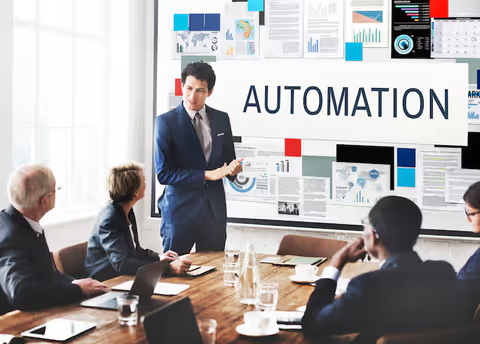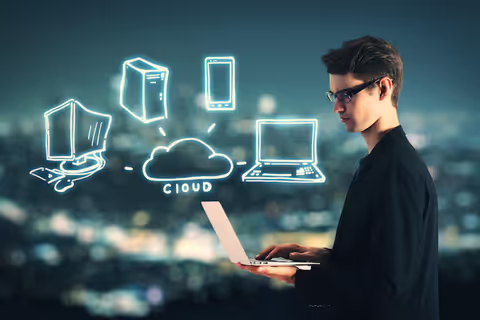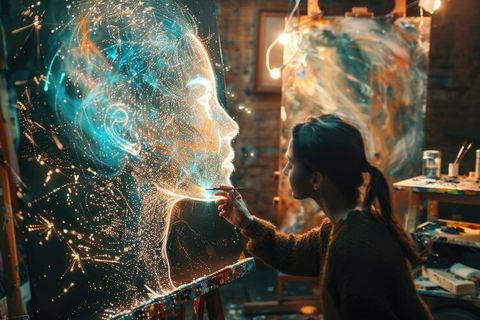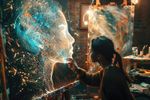
AI in Art Creation Discover Techniques, Facts, and Knowledge
Artificial intelligence (AI) in art creation refers to the use of machine learning models and generative algorithms to produce drawings, paintings, illustrations, and even photo‑realistic images — often based on textual prompts or combinations of existing visuals. These tools emerged because of advances in neural networks, computing power, and large datasets: by “training” on huge collections of existing artwork, AI systems learn patterns of style, color, composition, and then generate novel images based on user instructions.
The reason this technology exists is twofold: first, to democratize creative expression — allowing people without advanced artistic training to produce compelling visuals; second, to dramatically speed up the creation process, letting artists and creators generate many iterations in a fraction of the time manual creation would take.
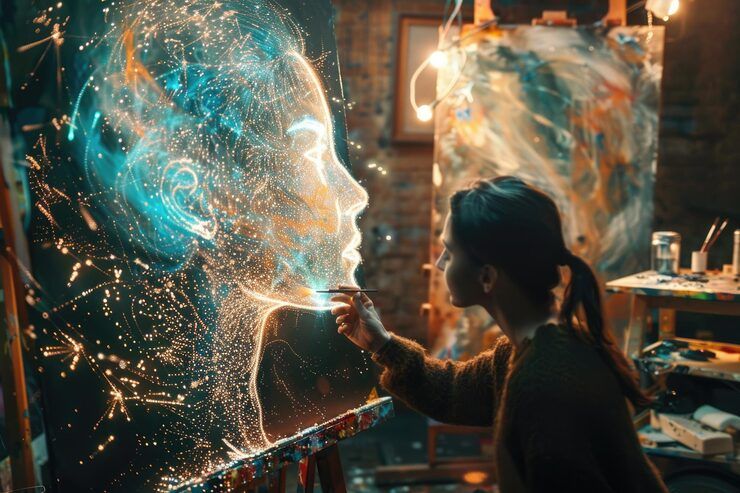
In short: AI in art creation sits at the intersection of technology and creativity, blurring traditional boundaries between human-made art and machine-generated imagery.
Importance
Empowering Creativity and Accessibility
-
AI tools enable people with limited drawing or design skills to express creative ideas visually — lowering the entry barrier for art and design.
-
Even professional artists can use AI to ideate, iterate, and prototype quickly: for example, generating concept art, mood boards, or mockups before committing time to detailed work.
Faster Art Production & Experimentation
-
What might take hours or days by hand can be done in seconds or minutes with generative AI. This speed fosters experimentation, allowing creators to explore many variations, styles, and compositions.
-
In industries like illustration, concept‑art for games/films, marketing, advertising, and social media — speed and flexibility matter. AI can accelerate workflows and reduce cost.
New Forms of Art & Creative Expression
-
AI-generated art often combines styles, eras, and influences in novel ways. This can lead to fresh aesthetics — perhaps impossible or unlikely through traditional paths.
-
Some creators regard AI as a collaborator — a tool complementing human vision rather than replacing it.
Social and Economic Impact
-
For many who cannot access art education or traditional tools — AI unlocks new paths to creativity, self-expression, and content creation.
-
But it also raises concerns: professional artists may feel threatened by rapid, low-cost image generation, possibly affecting demand for certain types of artistic labor.
AI in art matters not only as a technological curiosity — but as a force reshaping creative industries, democratizing visual expression, and challenging long-held assumptions about artistry, authorship, and originality.
Recent Updates & Trends
| Date / Period | What Happened / Trend / Change |
|---|---|
| 2025 (ongoing) | Legal and judicial scrutiny is intensifying worldwide over AI‑generated visuals trained on copyrighted data. Courts are examining whether AI models that learn from copyrighted art constitute infringement. |
| 2025 (mid-2025) | Hollywood studios have raised concerns over AI-generated images of iconic characters, sparking lawsuits and discussions on intellectual property rights. |
| 2025 (April) | Researchers proposed technical frameworks to detect copyright‑infringing or forged AI‑generated art, highlighting a growing need for accountability. |
| 2025 (ongoing) | Watermarking techniques — embedding metadata into AI‑generated images — are gaining traction to flag AI-created content and prevent misuse. |
| 2025 (global art scene) | AI-assisted works are increasingly showcased at major festivals and exhibitions, raising debates about authorship, authenticity, and compensation. |
These developments highlight that AI-generated art is no longer a niche experiment — it has become a central topic for legal, ethical, and artistic debates.
Laws or Policies
Situation in India
-
Under the Copyright Act, 1957, authorship must be attributed to a natural person. AI — being non-human — is not recognized as an “author.” Purely AI-generated works (without meaningful human involvement) currently enjoy no copyright protection.
-
For a work to be eligible for copyright, there must be significant human input — for instance, creative prompting, selection, editing, or curating of the AI output.
-
This legal ambiguity leaves AI-only creations in a legal gray area, with uncertain ownership and minimal recourse for infringement.
International / Industry‑Wide Complications
-
Courts are divided: some rulings reject AI-generated content as infringing copies, while others continue to question whether training on copyrighted work constitutes infringement.
-
Legal principles like the “idea–expression dichotomy” remain central: copyright protects specific artistic expression, not general style or concept. This makes it challenging when AI imitates a particular artist’s recognizable style.
-
Emerging regulations may soon require transparency, watermarking, or licensing frameworks for AI-generated art, especially when AI models are trained on copyrighted work.
Key Challenges
-
Who is liable when AI-generated art infringes copyright — the user, the model creator, or the platform? This is still unresolved.
-
Can artistic style itself be owned or protected? Most laws treat style as non-protectable, complicating claims against AI that emulate an artist’s recognizable style.
Regulatory and legal frameworks are still catching up, making it essential for creators to embed human creative input if they wish to claim rights over AI-assisted art.
Tools and Resources
-
DALL·E 2 – A text-to-image AI system that generates artwork from descriptive prompts.
-
Midjourney – Popular AI image generator for creating and refining art from textual descriptions.
-
Stable Diffusion – Open-source diffusion model widely used for experimentation and creative projects.
-
Post-processing tools – Photoshop, GIMP, or Procreate help refine AI-generated images, adding human touches to boost authorship.
-
Ethical & legal monitoring frameworks – Tools like CopyScope and DFA-CON detect potential copyright infringement or forged AI-generated art.
-
Watermarking & provenance services – Useful for labeling AI-generated content and tracking its origin.
-
Online communities & forums – Peer discussions on AI art ethics, copyright, and workflows provide knowledge-sharing opportunities.
These resources help creators navigate the intersection of creativity, legality, and technology.
Frequently Asked Questions
What counts as “significant human involvement” to claim copyright over AI-generated artwork?
Significant human involvement includes curating, editing, combining AI outputs, refining composition, or integrating AI elements into a larger project. Simple prompt entry alone is usually insufficient.
Can an AI-generated image infringe someone’s copyright?
Yes — if the AI output closely replicates an existing copyrighted work. Near-identical reproduction of protected elements can be considered infringement.
Is the style of an artist protected under copyright law?
Generally, no. Copyright protects the specific artwork, not the general style or aesthetic. AI imitating a style usually does not constitute infringement.
Will AI-generated art be considered “original”?
Purely AI-generated art without meaningful human input is generally not considered “original” for copyright purposes; human authorship is typically required.
How can creators protect themselves when using AI art tools?
-
Provide substantial human editing or augmentation after AI generation.
-
Keep records of prompts, iterations, and edits.
-
Use watermarking or metadata to label AI-generated content.
-
Avoid reproducing recognizable copyrighted works or characters.
Conclusion
AI in art creation merges technology and creativity, enabling rapid image generation, new aesthetic possibilities, and broader access to visual expression. While it opens exciting opportunities for experimentation and collaboration, it also raises legal, ethical, and professional challenges.
Human intervention remains critical for both artistic value and copyright protection. As laws and policies evolve, creators must balance AI-driven efficiency with meaningful human creativity to navigate authorship, originality, and ownership responsibly.
The landscape of AI-generated art is evolving rapidly, and staying informed about trends, tools, and legal considerations is essential for anyone exploring this transformative field.


